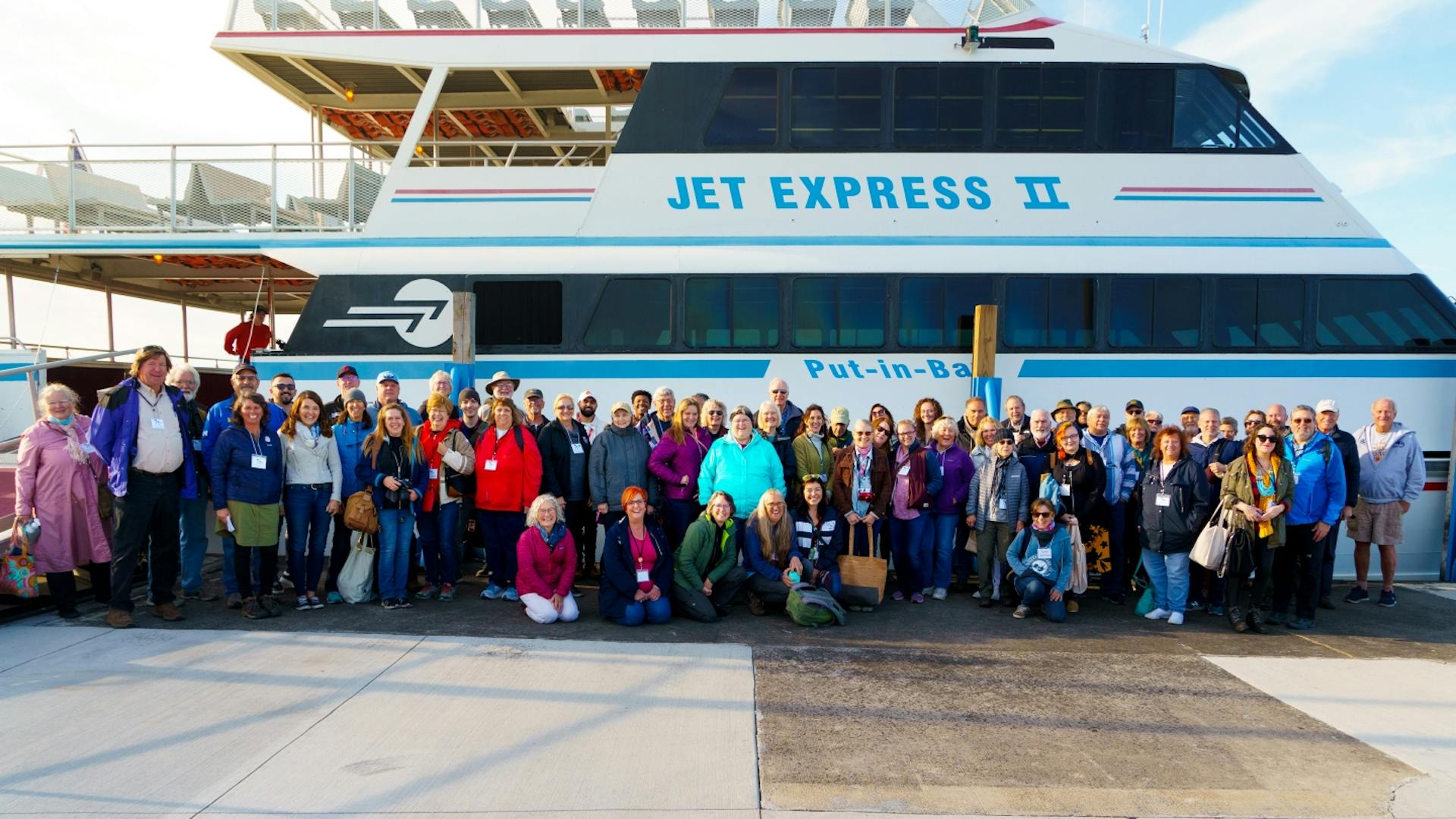The Islands of the Great Lakes Seek Answers Together
Reps from 20 islands in the Great Lakes Islands Alliance met in October to brainstorm solutions for common challenges of life surrounded by water.

It’s not great feeling like you’re alone on an island.
And that’s why the Great Lakes Island Alliance — which recently held its annual conference in Put-in-Bay, Ohio — is so valuable.
“The whole essence of the Great Lakes Island Alliance is to foster conversation, to share ideas, share challenges,” says Peter Huston, the project manager for the organization. “It helps to stimulate a certain amount of creative thought.”
Held in early October, the conference brought together representatives from 20 islands, including South Bass, Kelleys and Middle Bass in Ohio; Beaver, Bois Blanc, Drummond, Harsens, Les Cheneaux, Mackinac, Neebish, Sugar and Washington islands in Michigan; Howe, Manitoulin, Pelee, Simcoe, St. Joseph and Wolfe islands in Ontario; and Madeline Island in Wisconsin. Representatives from Isle au Haut island in Maine were also in attendance to get ideas for their own upcoming conference.
In total, there are some 35,000 islands in the Great Lakes. Of those, Huston estimates that 30 of those have either year-round or seasonal residents. The biggest island is Manitoulin in Lake Huron, which has about 13,000 residents and is the largest freshwater island in the world. “It’s like going to Rhode Island,” Huston says. “It has farming and quarrying. It has Tim Hortons.”
But the real astonishing fact is that Lake Erie boasts 19 of the 30 inhabited islands.
The conference sought to tackle issues unique to island life, including high water, internet access, the difficulty of doing commerce, education and healthcare.
“There is something very much different about the way island people do things and solve problems,” Huston says.
Huston tells the story of Sugar Island in northern Michigan, which has a population of about 600, and how it’s affected by lack of widely available internet access. “The kids would gather together in the parking lot of town hall to be able to do homework,” he says. “There are still many places where broadband is just a wish.”
At the conference, Sugar Island reps could learn from the story of Madeline Island in Lake Superior, which has a year-round population of about 300. About five years ago, the residents banded together and came up with a funding plan to bring high-speed internet access to the island.
“That was a game changer for them and the people who wanted to live there,” Huston says. “They had a lot of people who rode out the pandemic there because of it.”
Other issues discussed included:
• More support of preschool and grade school education on all the islands. “We want to be able to do more to help and coordinate that among the islands,” Huston says. “Every island has the same mission — to be able to provide a community that’s attractive and affordable for young people to stay. We’re all looking at this path forward for sustainability. It has to be built on education.”
• Addressing water quality, conservation and high-water resiliency. “Almost every island will be dealing with water quality,” Huston says. As part of the conference, the group travelled to Middle Bass Island to see efforts underway to protect wetlands.
• Healthcare is an ever-present and wide-ranging issue. “Our Canadian friends have a lot more support,” Huston says. “Almost every one has a doctor’s office and also a pharmacy.” Houston says it’s been difficult to get prescriptions over to Put-in-Bay due to corporate policies at area pharmacies. He also noted that Kelleys Island is about to open a healthcare clinic funded by Erie County.
• Commerce. “Island life is all about logistics,” Huston says. “The good news is I can buy dog food from chewy.com and chewy.com will pay for that delivery. The bad news is that for every box of dog food being brought over, it’s tying up space for passengers. When the ferry stops the two airlines have to spend a portion of every day just bringing over freight. While it’s really wonderful that they’re doing it, there’s very little to no money being made by these companies.” If island residents are more careful about the timing of their orders, it improves the situation for everyone.
For those interested in island live, Huston offers this advice: “Try it out. I can tell you living on an island has been a wonderful experience and it’s the people who make the difference — their resiliency, their ability to figure out problems.”
Stay on top of everything Lake Erie has to offer — all year long — by subscribing to our free The Splash newsletter. It’s your guide to the best food, drinks, parks, beaches, shopping, festivals, music and more. Click here to subscribe.






